Blur Busters now recommends purchasing newer monitors from:
G-SYNC List | FreeSync List | List of Best Gaming Monitors
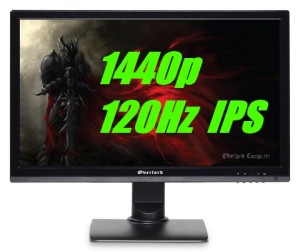
For users who really need more desktop space, better viewing angles, more resolution, getting an IPS LCD panel has often been the only choice. Unfortunately, most IPS and PLS LCD displays could not do much more than 60Hz. Until recently.
Now there are IPS/PLS panels that are overclockable to between 96Hz and 120Hz!
Monitor: QNIX QX2710 Evolution II
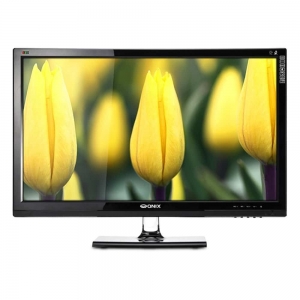
QNIX QX2710 at Amazon.com (matte version)
QNIX QX2710 at Amazon.com (glossy verison)
Monitor: Overlord Tempest X270OC
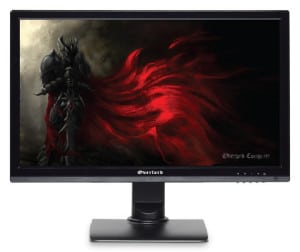
Overlord Tempest X270OC at OverlordComputer
Monitor: Yamakasi Catleap Q270 “2B”
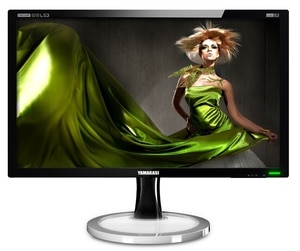
Warranty on Korean Monitors
Most overclockable 1440p IPS/PLS monitors are korean imports. As these are Korean imports with potentially inconvenient warranty claims, we highly recommend buying from a reputable retailer, preferably from a place within your country that allows easy warranty exchanges (e.g. reseller on Amazon).
Alternatively, the Overlord Tempest X270OC has a USA warranty which may calm nervous people who do not wish to deal with the inconvenience of shipping a monitor all the way back to Korea.
How To Overclock

1. Use a high quality dual-link DVI cable, and a very recent AMD/NVIDIA graphics card.
2. Install ToastyX Pixel Clock Patcher (Download AMD version or NVIDIA version).
3. Install ToastyX Custom Resolution Utility (Download), or use NVIDIA’s equivalent.
4. Using Custom Resolution Utility, create a 2560×1440 resolution at 96Hz, and at 120Hz.
5. Switch to the new resolution. Try 96Hz first, then try 120Hz.
You can also test other refresh rates as well (e.g. 90Hz, 110Hz, 125Hz). There is also detailed information in this Overclock.net thread and in Overlord Forum.
Should I Choose Overclockable IPS Over Other 120Hz Panels?
To gain an understanding of TN, VA and IPS panels, see TFTCentral’s Panel Technologies article. To gain an understanding of strobe backlights, read about 60Hz versus 120Hz versus LightBoost. In summary, the pros/cons of the panels are typically:
TN-based LCD panels:
Pros: Fast response. Less ghosting and motion blur. Lots of new strobe backlight options.
Cons: Narrower viewing angles. Colors at 120Hz+ can be poor, especially in strobe mode.
VA-based LCD panels:
Pros: Better contrast ratio (5000:1). More colorful than TN. Better viewing angles.
Cons: Gamma uniformity issues in dark colors, more ghosting with motion of dark colors.
IPS-based LCD panels:
Pros: Best color accuracy. Best viewing angles. High resolutions available (1440p, 4K).
Cons: No strobe backlight options yet available. No CRT motion clarity. Possible IPS glow.
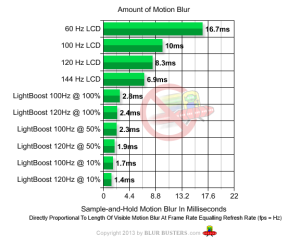
It’s worth noting that there are a few people who get motion sickness playing on LCDs at 60Hz, where they never got motion sickness when playing with a CRT tube. In this case, it is worth that there are several testimonials reporting less motion sickness with a strobed TN panel than a non-strobed IPS panel.
However, if color quality is more important (e.g. working with PhotoShop) and resolution (2560×1400) is more important, and you want something “Better Than 60Hz“, getting an overclockable IPS monitor can be an excellent informed purchase.
Bear in mind, a very powerful GPU is needed to drive a 1440p 120Hz monitor during gaming at sufficient framerates to benefit from 120Hz operation.
Conclusion
For overclockable 1440p 120Hz displays, we recommend the popular Overlord Tempest X270OC (may be out of stock) and QNIX QX2710 Evolution II (easy to get, budget choice). These are the Blur Busters Recommendations if you really don’t want a TN or VA panel.
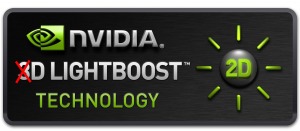
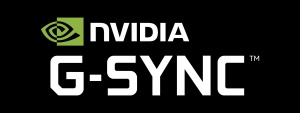
Discuss monitor overclocking in Blur Busters Forums!





